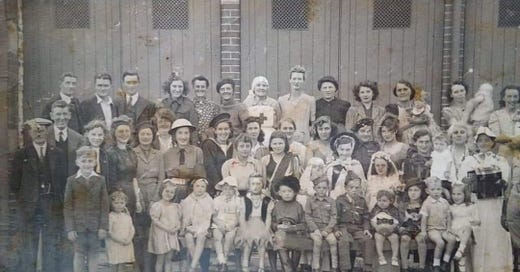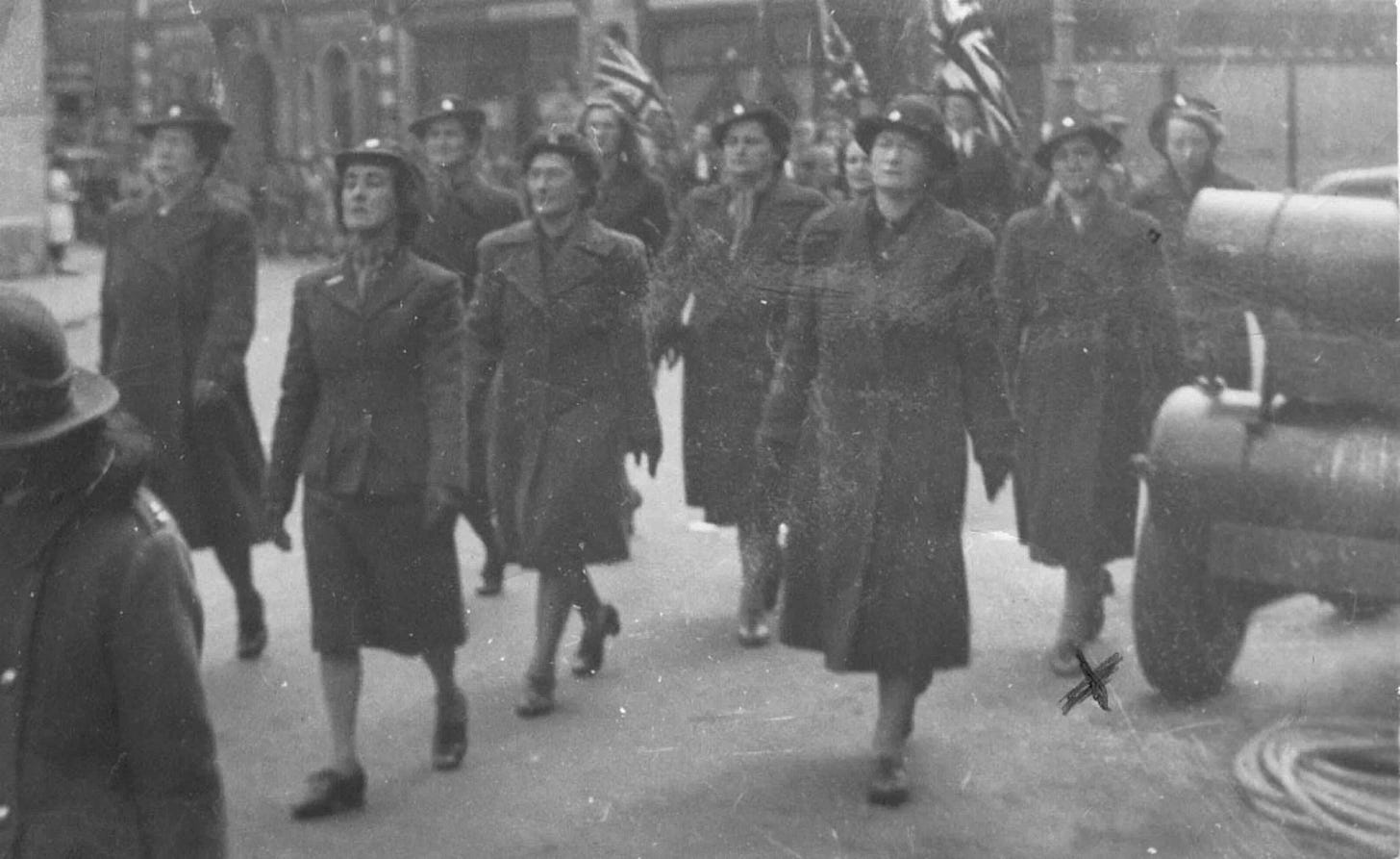'Victory in Europe Day' | Bridgend
As we approach the 80th anniversary of ‘Victory in Europe Day’, I wanted to explore how the people of Bridgend celebrated the end of the conflict in Europe.
As we approach the 80th anniversary of ‘Victory in Europe Day’, I wanted to explore how the people of Bridgend celebrated the end of the conflict in Europe.
On the evening of the 7th of May 1945, the BBC interrupted its programming to announce that Germany had officially surrendered after six years, marking the end of World War II in Europe. They also announced that ‘Victory in Europe Day’ would be a national holiday and would take place the following day.
Many inhabitants didn't wait for the official day of celebration and began the festivities as soon as they heard the news. Within hours, the streets of Bridgend were lined with colourful bunting, flags and streamers. Bells rang out, bonfires were lit, and fireworks illuminated the skies above Bridgend.
On the 8th of May, more people took to the streets of Bridgend for the official day of celebration. Many celebrations continued from the previous night, with more crowds congregating in the streets surrounding the town hall. Public houses were stocked with beer, and the town was alive with celebration and revelry. In the evening, the skies above Bridgend were again illuminated with fireworks, the streets were floodlit, and crowds sang and danced into the early hours.
Across the district, street parties were quickly organised by neighbours and families coming together to celebrate with their children. The Glamorgan Gazette reported: “The Street parties in Bridgend during VE celebrations were a delight. Thank you, parents and neighbours, for giving the children a special treat. They have had very little of things special during the War.”
Aberkenfig British Legion Club members performed a ‘Funeral of Hitler’ during their VE Day celebrations. The Glamorgan Gazette reported: “A funeral procession complete with parson in robes and bearers was formed and marched to the place of interment where 'Hitler's' body was removed from the coffin and pulled to pieces.”
For many people, the end of World War II in Europe was an opportunity to thank God. All places of worship in the town were opened for private prayer, and Thanksgiving services were held. The bells of St Illtyd’s Church rang out, and a cross was illuminated on the church tower as a sign of peace and hope.
On Sunday, May 13th, at 3:30 p.m., 400 townspeople gathered at the Embassy to attend a ‘United Service of Thanksgiving’ to “join together in prayer for deliverance from the Nazi Terror” led by clergy members from St Mary’s Church (Nolton), St Illtyd’s Church (Newcastle), and the chaplain of the Y.M.C.A. The Bridgend County School Orchestra accompanied the service.
Following days of celebration and services of Thanksgiving, people began settling into everyday life. Although the general feeling was happier, many began to contemplate the years and loved ones lost to the war, which was not entirely over yet. In the months following VE Day, conflict continued in Japan.
On the 18th of May, The Glamorgan Gazette reminded its readers about the ongoing conflict: “VE day speeches reminded us that though victors in the west, we have yet to be victors in the east. Our task is not yet completed so do not indulge in an orgy of coupon spending but wait for the day that is coming when there will be peace in all lands.”
On the 14th of August, Japan surrendered to the Allied forces, marking the end of World War II. As with ‘Victory in Europe Day’, the BBC announced that ‘Victory in Japan Day’ would be a national holiday and would take place the following day.
The Glamorgan Gazette described ‘Victory in Japan Day’ celebrations as: “so excellent a programme for the residents of the town who, in most cases, really let themselves go and celebrated VE and VJ days all rolled into one or rather two.”
I will be writing about ‘Victory in Japan Day’ in August.







